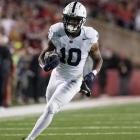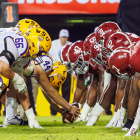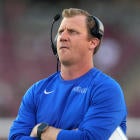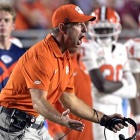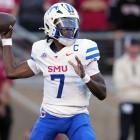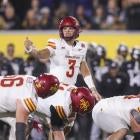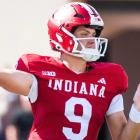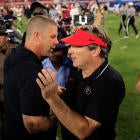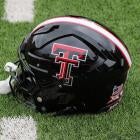
The 2012 NFL Draft wrapped up on Saturday afternoon, and while there weren't many surprises early with Andrew Luck, Robert Griffin III and Trent Richardson -- all Heisman Trophy finalists last season -- going with the first three picks, by the time all seven rounds were complete, there were a few big names that were never called.
One of the biggest shocks involved Boise State quarterback Kellen Moore. There were six Boise State players selected in the draft -- only Alabama, Oklahoma and Georgia had more -- including two in the first round, and there were eleven quarterbacks drafted, but none of them were the quarterback that won 50 games during his four years of college ball.
Yet there was a quarterback named B.J. Coleman from Chattanooga who was taken in the seventh round. The difference between Coleman and Moore, aside from Moore's experience on big stages anyway? Coleman is 6-foot-3. Moore is only six-feet.
Of course, Moore wasn't the only big name player to go undrafted this season. Just to name a few, there were Washington's Chris Polk, Arizona State's Vontaze Burfict, Oregon's Darron Thomas, Houston's Case Keenum, Texas A&M's Jeff Fuller and Miami's Marcus Forston.
All will likely sign as free agents somewhere, but players like this are just the tip of the iceberg when it comes to the oddities of the 2012 NFL Draft.
There were 253 players drafted this week, and only eleven players were drafted from traditional NFL factories like Florida, Florida State and Miami. The first player from any of those schools to be drafted was Miami's Sean Spence, whom the Pittsburgh Steelers took with the 86th pick. After players from schools like Midwestern State, Montana and Appalachian State had been drafted.
A player from Miami (OH) was drafted before a player from The U!
Then there was Bryce Brown, who spent time at Tennessee and Kansas State after being considered the top prospect in the country out of high school in 2009. He only had 104 carries during his college career, and only 3 carries in the last two years. Yet, in spite of his lack of playing time, Brown was selected by the Philadelphia Eagles in the seventh round. While backs like the previously mentioned Chris Polk and Tennessee's Tauren Poole, who replaced Brown at Tennessee and rushed for over 1,700 yards the last season, will have to latch on somewhere as a free agent.
In Big Ten country, things got off to a slow start for the conference, but at the end of the draft only the SEC (42) had more players selected than the Big Ten (41). What's insane about the Big Ten, though, is that in the first two rounds there were four members of Illinois to be drafted.
Only five members of the national champion Alabama Crimson Tide were drafted in that same span.
More remarkable, over the last five years Illinois has had more players selected in the first round of the NFL Draft than any other program in the Big Ten. Yet, in that five year span, the Illini have gone 31-32, further proving that while he was an excellent recruiter, Ron Zook wasn't the best coach.
So what do all these strange happenings in the NFL Draft mean to the grand scheme of things in college football? Well, truth be told, they don't mean all that much. Success on the college level has never been directly correlated to where a player is drafted in the NFL, or how many players from each school are selected.
The NFL is just an entirely different animal than college, and talent evaluators there look for different things than college coaches do. And much like with recruiting in college, some of those five-star players (first round picks) turn out to be busts and the two-star kids (late-round picks) wind up leading you to a title.
In the end, it's always up to the player how succesful he's going to be.







